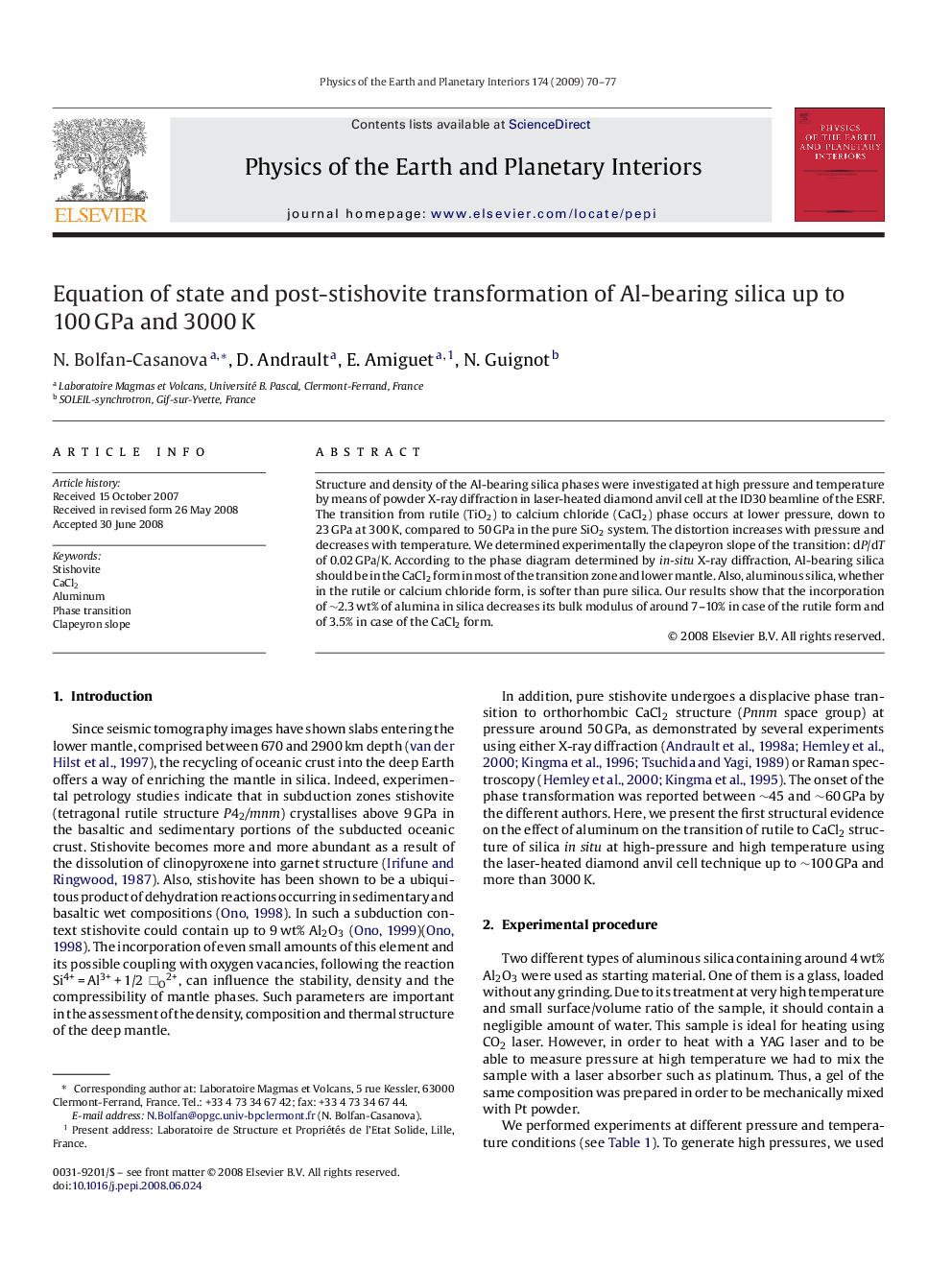| Article ID | Journal | Published Year | Pages | File Type |
|---|---|---|---|---|
| 4742464 | Physics of the Earth and Planetary Interiors | 2009 | 8 Pages |
Structure and density of the Al-bearing silica phases were investigated at high pressure and temperature by means of powder X-ray diffraction in laser-heated diamond anvil cell at the ID30 beamline of the ESRF. The transition from rutile (TiO2) to calcium chloride (CaCl2) phase occurs at lower pressure, down to 23 GPa at 300 K, compared to 50 GPa in the pure SiO2 system. The distortion increases with pressure and decreases with temperature. We determined experimentally the clapeyron slope of the transition: dP/dT of 0.02 GPa/K. According to the phase diagram determined by in-situ X-ray diffraction, Al-bearing silica should be in the CaCl2 form in most of the transition zone and lower mantle. Also, aluminous silica, whether in the rutile or calcium chloride form, is softer than pure silica. Our results show that the incorporation of ∼2.3 wt% of alumina in silica decreases its bulk modulus of around 7–10% in case of the rutile form and of 3.5% in case of the CaCl2 form.
